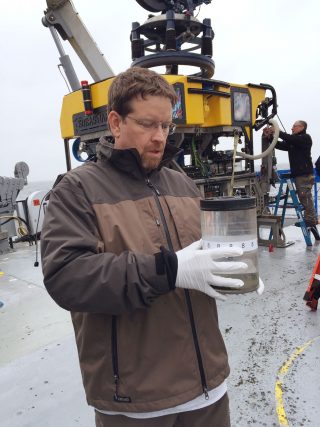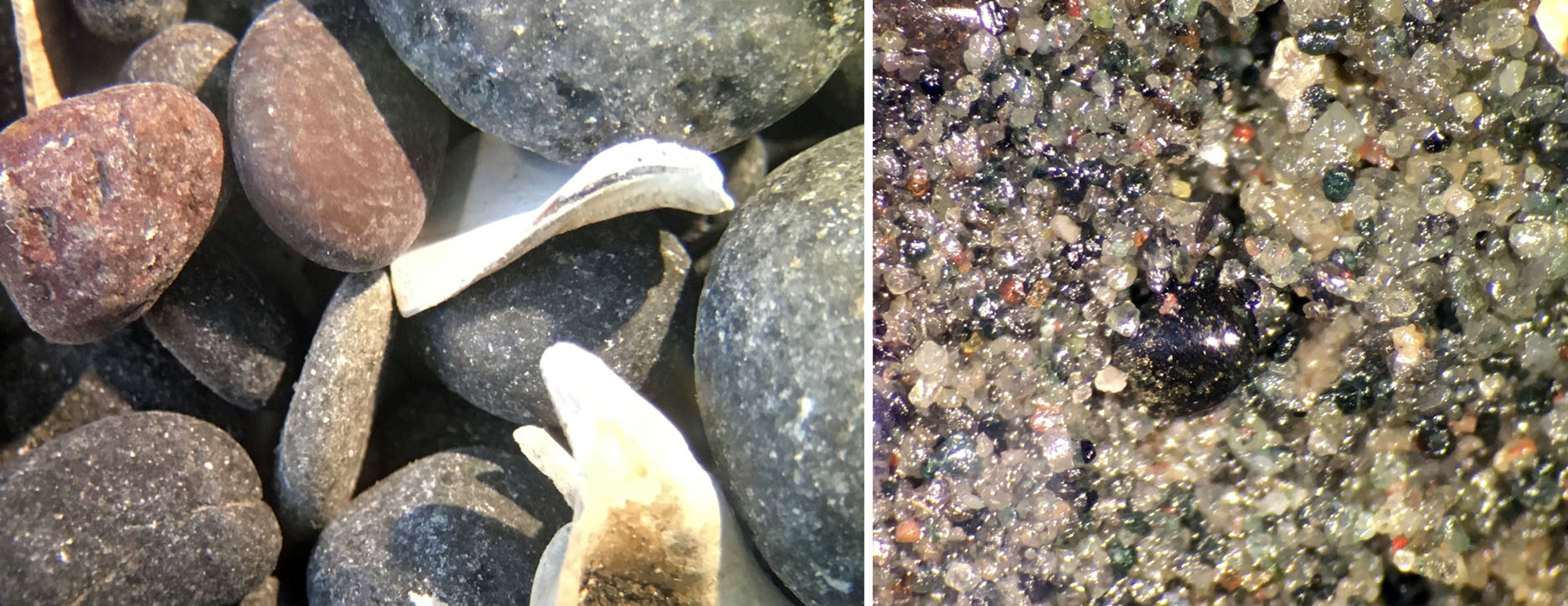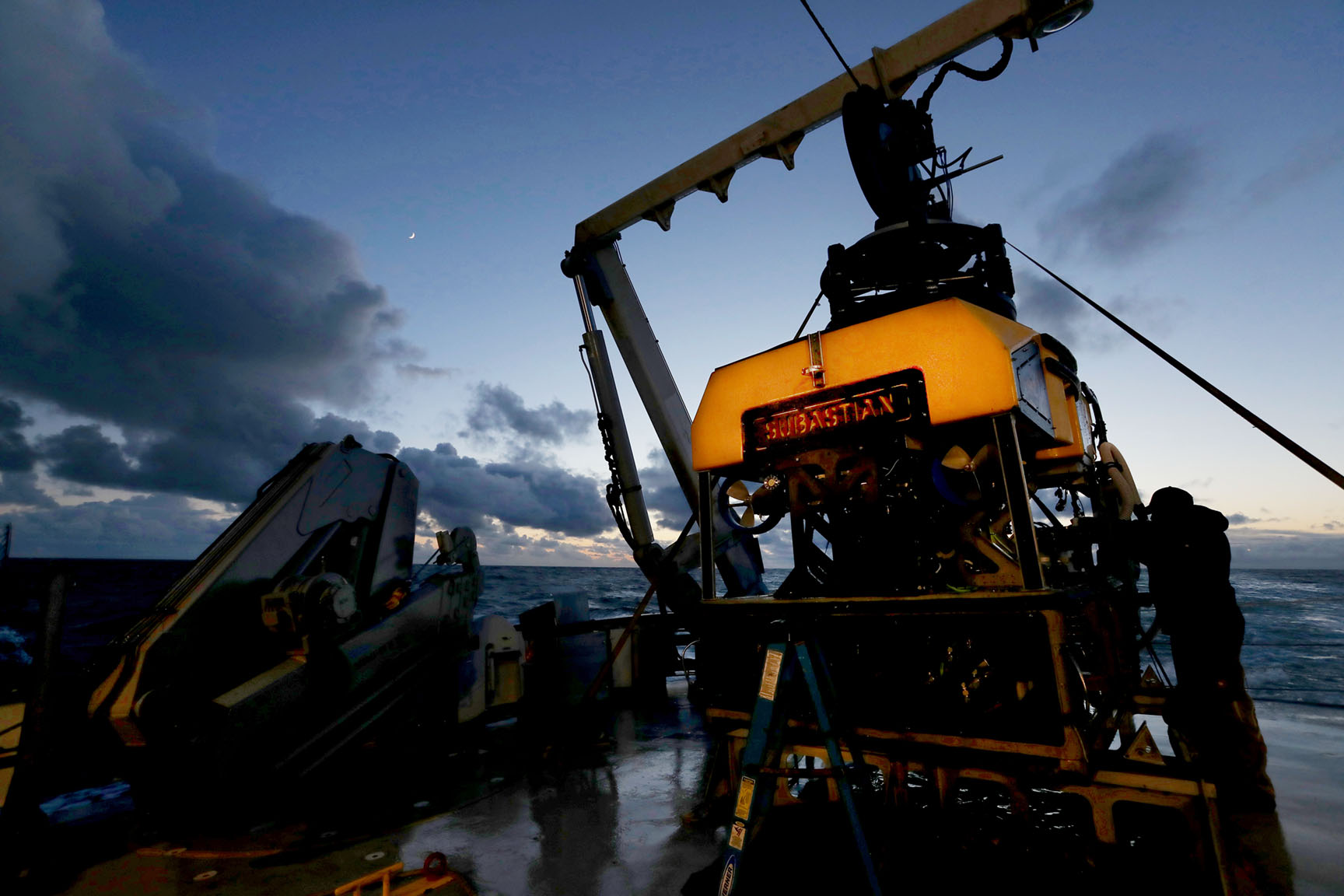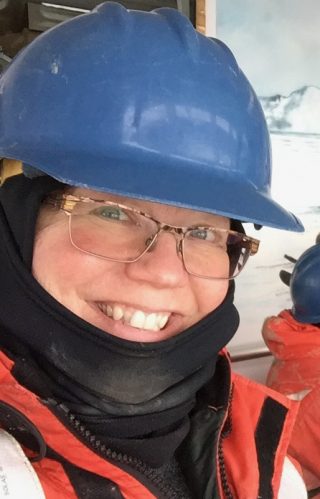
The seaborne portion of our expedition has ended, but the land-based search begins. In the laboratory, all the samples are examined with fresh eyes, using instruments that enable Dr. Marc Fries to “see” potential meteorites at a much finer scale.
The preliminary examination we performed while on board the Falkor has turned up a few interesting things. Even though we collected a large number of centimeter-sized rocks, none of them are meteorites. Yet among the large amount of smaller material, those of the Seeking Space Rocks team who sifted through it during the cruise decided that there are small melted meteorite fragments. This finding means that there could be more among the material brought back to NASA.
By all accounts the team could have been disappointed that we did not recover any unmelted meteorites. Science does not quite work that way, though. While It would have been better to recover unmelted meteorites (including cinder block-sized meteorites!), this was exploration. Months ago we set the goal of recovering at least one unmelted meteorite, a definable goal from which to make concrete plans. In reality, however, the only way we could have known exactly what was waiting for us is to not have performed the expedition at all.

The job of a scientist is not to maintain a narrow focus on a particular desired outcome, but to be flexible and unbiased, and to act as an interpreter of the physical world around us through the results of expeditions like this one. We have defined the problem as well as we could, tested and re-tested our calculations, devised a workable plan to collect material, and carried that plan out in a safe and efficient manner while adapting to anomalies along the way. The team came out of the field elated with our finds, wiser from the experience, and ready to get to work in the laboratory.

For now, we will re-examine the larger material to make sure we did not miss any meteorites. The smaller material will be washed, dried, and carefully examined. Particles that look like potential meteorites will be separated out (by hand) and mounted in a “grain mount.” The grain mount is a collection of small grains that are fixed in polymer and polished to exposed their interiors. We will examine those interiors with an electron probe, which is a specialized instrument for measuring the chemical composition of rock samples. We will look for elements such as nickel that can indicate that a given rock is a meteorite. Then we will use the elemental data to identify the meteorite “family” that each sample belongs in. If all or most of them are from the same family, then that is strong evidence that the melted fragments all came from a single meteorite fall. Measurements based on weathering of the samples will tell if they came from last March’s meteorite fall, and from there we can draw conclusions on the nature of the original body that produced the meteorite fall itself.
So, stay tuned but be patient. This will take some time – probably on the scale of a few months to a year.


